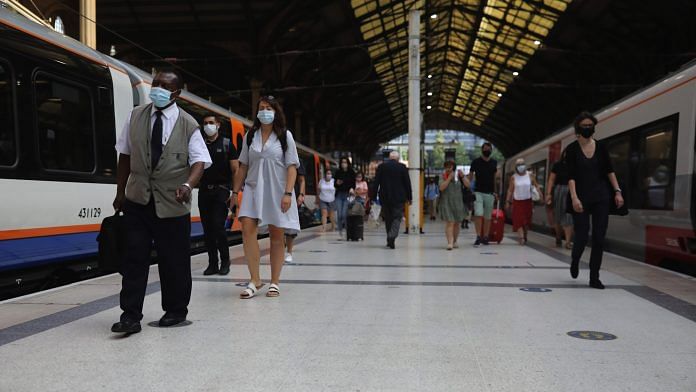Traditionally, the first peak on a roller coaster ride is the tallest. But for Europeans faced with COVID-19, the second ascent in terms of confirmed cases and deaths has been far steeper and in some ways more terrifying.
European governments have responded to an alarming second wave with repeat efforts to keep people at home and separated from one another – despite, as in the case of German Chancellor Angela Merkel, the heckling of right-wing politicians. Now, many will try to avoid the same mistakes made when the first lockdowns were eased earlier this year amid an impending European summer-holiday season.
One WHO official recently warned that another failure to do what’s necessary during a lull to fundamentally quell the pandemic could lead to a third wave in Europe by early 2021.
Experts have made a number of recommendations for enduring and exiting the current period of relative confinement in the most responsible way possible. Some argue for refocusing on the basics – like getting people to actually comply with rules. Belgium threatens to fine quarantine breakers €250 on the spot, for example, while in Italy not wearing a mask can now cost you €1,000.
Other recommendations have included bolstering the clarity and consistency of lockdown exit strategies, using relative downtime to stockpile equipment for local hospitals and invest in systems for tracing and isolation, and – at least in the case of the UK – moving away from “regional firefighting” techniques to a more centralised system.
There have been signs that autumn spikes in COVID-19 cases and deaths are receding in response to government restrictions. The Czech Republic, which slipped from a model response during the first wave to a surge during the second that prompted the closure of shops and restrictions on free movement, has since seen declines in infections and deaths. And in France, new infections and hospital admissions dropped sharply earlier this month after two weeks of nationwide lockdown.
By way of contrast, in the US confirmed cases continue to rise. Millions of people in the country were expected to travel for the Thanksgiving holiday as businesses remain “mostly open” in the bulk of states, and just two out of 50 have implemented stay-at-home orders, according to one analysis.
Like the US, Europe has also endured protests against public health restrictions staged even as the pandemic rages. While there has been a spate of upbeat recent developments when it comes to vaccines, experts believe they likely won’t become widely available until after a long, hard winter in the Northern Hemisphere. In the meantime, the death toll is projected to exceed one million in Europe and Central Asia alone by 1 March, 2021 – and to top 2.7 million globally by that point.
The first lockdown in the UK actually led to some positive changes in terms of men and women sharing childcare responsibilities, according to this analysis, though the current shutdown is disproportionately burdening women in terms of job losses and domestic obligations.
Instead of trying to implement lockdowns, European governments should offer subsidies to shop and restaurant owners in exchange for shutting down completely for a few months, according to this analysis – which argues that this could keep even marginal businesses alive while further reducing social interaction.
A recent poll showed nearly a third of people in the UK aged 18-24 oppose the lockdown. That could bode well for the recently-rebranded Reform UK political party as it seeks to win over younger Labour voters, according to this analysis.
In the US, lockdowns have been uneven in implementation and effectiveness. Trumpeting the line that the pandemic is just a “blue state problem” and local economies should remain open in Republican-run areas has led the country to the intersection of economic calamity and mass death, according to this analysis.
Things the UK has in its favour during the second lockdown, according to this expert: a centralized health system, world-class scientists and innovators, and a clever approach to trials of therapeutics.
Implementing border controls within the Schengen area in response to the pandemic earlier this year was controversial and costly. But according to this recent study, it made a measurable contribution to containing the spread – something policy-makers may think about as they consider the timing of once again relaxing such restrictions.
A recent study found that lockdowns of longer duration reduce the number of days that intensive care units run deficits of available beds – and that France, Germany, and Italy face major ICU capacity challenges this winter without further suppression measures.
This article was first published at World Economic Forum.
Also read: ‘Lockdown Lite’ is Europe’s new strategy to fight coronavirus



